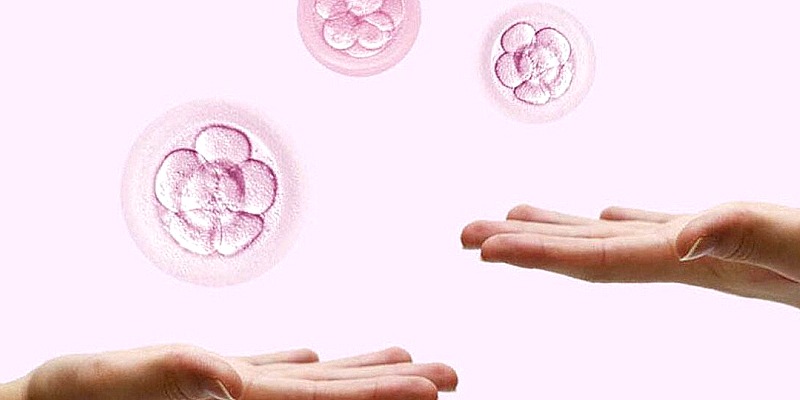It is one of those days when I got a little time to ponder about my clinical encounters.
There was a 20-year-old lady who came to the clinic for STD screening. I asked her some questions to determine which are the most suitable ones for her, and her reason for wanting the test.
To my surprise, she told me it’s because she wanted to sell her eggs and the fertility center requires her to do some test.
Seeing this was a rather unusual reason, I probed further and she replied, “I’m doing this for money.”
The encounter has left me with complex feeling about how many aspects of our society is evolving and this brings back memories from many years ago when egg donor was a topic that gained enough traction that it even reached one of the mainstream newspapers.
Fertility rate in Malaysia has been on a steady decline since the 1960s, from around 6.3 births per woman to 1.94 births per woman this year (2022).1
The same can be seen throughout most of the world, and this can be attributed to rising cost of living, changes in value and attitude towards family raising, advancement in contraceptive methods, etc.
Late marriages and delayed motherhood coupled with a lot of other factors have increased demand for fertility treatment such as in vitro fertilization (IVF).
While new technologies in fertility medicine have offered new hopes to prospecting families, there is also a flip side to it.
To understand what I want to discuss later, let me give you a very simplified process of IVF.
Normally, the IVF process begins with ovarian stimulation at the beginning of the menstrual cycle, in which follicle stimulating hormone (FSH) is injected to obtain a good quality of oocytes (eggs).
The development of the ovarian follicle is monitored by regular ultrasound scans, nearing the end of the maturation, human chorionic gonadotrophin (HCG) injection is given, and the eggs are collected about 36 hours later at an outpatient setting.
The eggs aspirated will be studied, then will be fertilized using the sperms.
Now, only about 60% of the retrieved eggs are viable, and only about 60-70% of fertilized eggs develop normally.
Hence, the development of the embryo (fertilized egg) is monitored, and out of all the collected eggs, only one or two of those which has the best chance of success are selected to be transfer into the womb. The rest of the pregnancy will then be followed up closely by the gynecologist.2

Women with reduced ovarian reserved can opt for egg donation. Egg donation is where a woman (donor) gives her eggs to another woman (recipient) to allow her to have baby.
Now in a perfect world, there may be patients which request for egg donations and there are donors who give their eggs to them out of purely altruistic reason.
I mean, who doesn’t want to be a major part of making other people’s life complete?
However, we are living in planet Earth. The basics of economics states that a business is driven by supply and demand. With the increase in infertility, the demand for these services is increasing.
What happens when many patients have failed IVF and seek for egg donors? It opens opportunities for profit seeking agencies to assist physicians by advertising lucrative incentives (compensation) for egg donors.
Besides the poaching, donors are often ranked according to their traits (so donors with high demand traits are paid more than donors with less desirable traits). See where are we heading?
Currently there is no specific laws governing IVF in Malaysia3, and the closest thing you can get is an outdated MMC guideline on assisted reproduction published in 20064 and another guideline on stem cell research and stem cell therapy published in 20095.
Besides that, IVF treatment is considerably cheaper in Malaysia compared to neighboring countries, hence there will be people from other countries coming to seek for egg donors in Malaysia6.
That together with a weakened ringgit, is a honey pot for unscrupulous marketing practices.
Now, imagine if you are a fresh graduate earning about RM2-4K a month in a big city, and an opportunity to earn a quick RM5-8k (that was the price back in around 2017) with relatively less effort presents to you, you will find it quite tempting.
Now I’m not saying egg donation is bad, just that the way potential donors are recruited (and some are not even given detailed risk of the procedure that they may go through).
Ultimately, the trend of people (yes, while I used women as example in this article, I’m referring to both male and females) trading their genes for money is gaining popularity.
Perhaps we should also look at this problem from a financial perspective. Are Malaysians paid less here compared to a similar position working in other countries? Are Malaysian employers paying fairly to their workers? With the incoming global recession, are young people nowadays earning enough to keep a roof over their heads?
Will all these factors lead them to find an easy money such as selling eggs? This is a huge topic with a lot of socioeconomic impact to the country’s development.
I hope I can do more about this but for now, sharing my thoughts is all I can do.
Sources:
1. Macrotrends, Malaysia Fertility Rate 1950-2022
2. NHS (UK), Overview on IVF
3. Asean Insiders July 2021, Page 3-4, In-Vitro Fertilization Laws and Regulations
4. MMC, 2006, Guideline on Assisted Reproduction
5. MMC, 2009, Guidelines on Stem Cell Research and Stem Cell Therapy
6. The New Savvy, Advice and Tips for Singaporean Patients Seeking Egg Donation in Malaysia
ADVERTISEMENT
ADVERTISEMENT


































